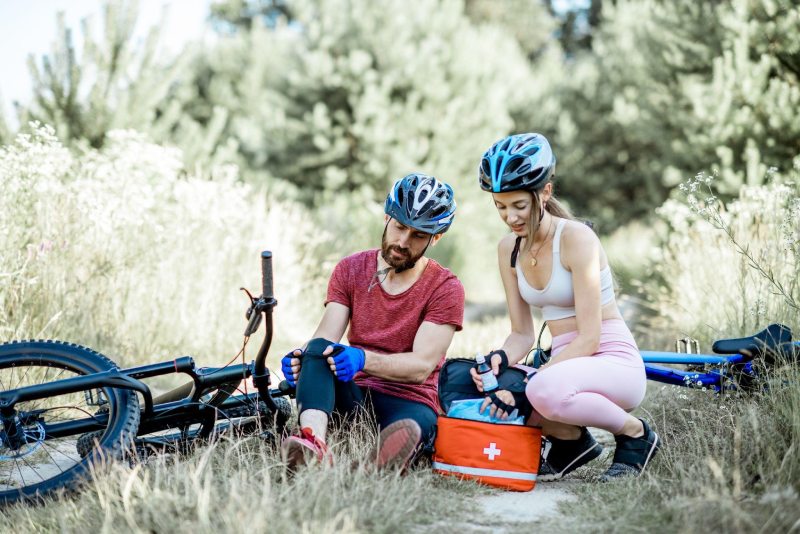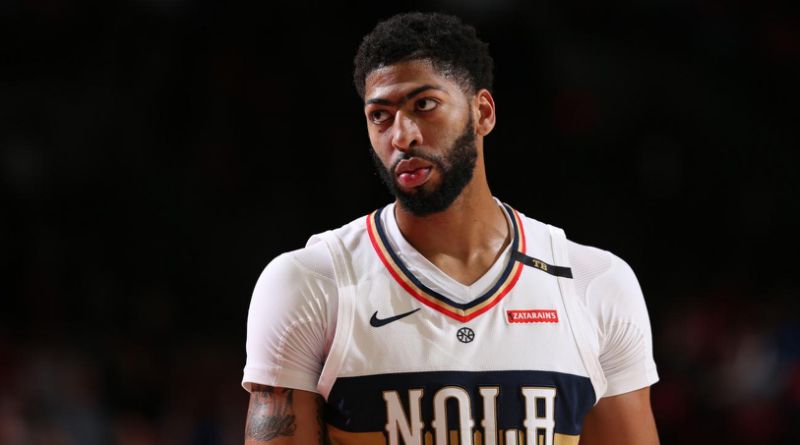Sports
Team Rehabilitation Services Discusses Preventing Sports-Related Injuries

Sports-related injuries are a significant worry for athletes and weekend warriors. The risk of injury increases as we push our physical strength to its limits. Knowing the importance of preventing injury as well as how to repair damage is critical to continuing in sports activities and achieving top performance. Here, physical therapy experts from Team Rehabilitation Services discuss the various ways to prevent sports-related injuries.
The first step is understanding the potential risks of specific activities. Each activity has risks, like overexertion, muscle strains, sudden impact, and fractures.
Because of these risks, active people need to prioritize warm-up and cool-down routines. These prepare muscles and joints for intense activity and help them recover afterward. Stretching before and after workouts can improve flexibility and reduce the chance of damage.
It’s important to recognize when to rest and let your body recover. Ignoring pain or fatigue can worsen existing conditions and cause more damage. By taking rest periods between training sessions and listening to your body, you can avoid overuse injuries and stay at peak performance.
Importance of Preventing Sports-Related Injuries
A study showed that athletes who had physical therapy had a 41% lower risk of new injuries.
Injury prevention is vital for athletes. Always wear the proper protection for your sport – but also pay attention to your form and technique. Warm up right, be aware of posture, and increase intensity slowly. Listen to your body: don’t ignore aches and pains. Rest when needed and get professional help from a physical therapist.
Warm-up and Stretching Techniques
Warm-up and stretching techniques are an important part of preventing injuries. They help prepare your body for exercise and promote flexibility and mobility. Here are three important injury prevention practices:
- Dynamic Warm-ups: Active exercises like high knees, lunges, arm circles, and jumping jacks mimic the sport you’re about to play, warms up muscles, and boosts your performance.
- Static Stretching: Take 15-30 seconds to stretch out all main muscle groups, like hamstrings, calves, quads, and upper body muscles. This lengthens muscles and prevents injury.
- Foam Rolling: In this self-myofascial release technique a foam roller is used to break up adhesions in muscles and fascia, increase blood flow, relieve soreness, and boost tissue quality. Roll slowly on tight or sensitive spots.
If you are unsure what warm-ups, stretches, or post-exercise treatments are best for you, consult a Team Rehabilitation Services physical therapist.
Proper Equipment and Safety Gear
In addition to proper warm ups, cool downs, and muscle care, Team Rehabilitation Services pointed out that proper equipment and safety gear are necessary for avoiding injuries. The proper equipment can help lessen the risk.
- Helmets, pads, and mouthguards are essential for high-impact games like football and hockey.
- Suitable footwear with good traction can avert slips, falls, and ankle issues on different surfaces.
- Braces can be helpful for athletes with joint instability or previous injuries.
- Clothing should be chosen that allows for movement and regulates body temp.
Athletes should also make sure their gear is well-maintained and inspected to identify potential problems before they occur.
Equipment and safety gear fitting is as important as the equipment itself. Poorly fiting gear can impede movement and compromise an athlete’s safety. It’s essential to take the time to fit each piece of equipment properly. Consult your physical therapist if you are uncertain of the proper fit.
Charles Barkley’s knee injury serves as a reminder to prioritize wearing the proper safety gear. He got hurt in a basketball game because he wasn’t wearing protective knee pads.
Athletes must understand the importance of proper equipment and safety gear. Investing in quality gear is an investment in your long-term health and your athletic success.
Tips for Safe Training and Injury Prevention
Training and conditioning with safety in mind is critical to avoiding sports-related injuries. Athletes must employ damage prevention strategies in order to stay safe and perform at their best. In doing so, they can reduce the risk of injury and avoid any delays in their training or competitions. Here are some tips:
- Warming-up benefits flexibility and blood flow as well as lessens muscle strain. This practice usually consists of dynamic stretches like luges and jumping jacks.
- Increase the intensity and duration of your workouts gradually. It gives your body time to adjust and prevents overexertion.
- Proper form and technique allow for proper alignment, less joint stress, and injury prevention.
- Always use the right equipment. Protective gear like helmets, pads, and braces are designed for each sport to absorb impact and protect vulnerable areas.
- Learn, practice, and maintain the correct form & technique
- Rest days give your muscles time to recover and avoid overtraining.
Implementing these techniques can improve your performance while keeping you injury-free.
Furthermore, different sports have individual injury risks and prevention methods. For instance, soccer players must work on agility and balance to prevent ankle sprains, while basketball players should focus on strengthening their knee joints to avoid ACL tears.
To ensure that your training is successful, athletes should consult health professionals or sports medicine experts for tailored guidance based on their needs and objectives. Physical therapists can guide you in proper warm ups, stretches, equipment fitting, and improving strength and flexibility.
Recovery and Rehabilitation Techniques
Should you suffer an injury or experience pain, Physical Therapy is a primary method of recovery. It incorporates exercises and stretches to boost the range of motion, strengthen muscles, and ease discomfort. Physical therapy also includes massages and joint mobilization in order to ease tension, improve circulation, and reduce inflammation.
Treatments that include modalities, like heat therapy, cold therapy, ultrasound, electrical stimulation, functional dry needling, blood flow restriction and laser therapy, can help tissue repair and minimize pain. Injury-specific exercises target muscle imbalances that may be linked to the damage.
Functional Training programs simulate real-life movements and tasks to gain strength, stability, and coordination. Based on individual needs, gradual progression back to your normal activity is critical for avoiding reinjury.
Using braces or taping can also give extra support to healing muscles and joints.
For optimal effectiveness, consistent physical therapy and diligent home exercise programs are essential. Talking to your healthcare team about any changes in your symptoms is important. Proper nutrition and rest aid tissue repair, fight inflammation, and help to heal. Following these suggestions helps athletes with their recovery and decreases future injuries.
Your physical therapist and Team Rehabilitation Services can be extremely beneficial in repairing or preventing and injury. Schedule your appointment today.
-

 Business3 weeks ago
Business3 weeks agoPrakash and Kamal Hinduja: Driving Social and Environmental Change
-
Education4 weeks ago
Fred DuVal: University Leadership as a Critical Resource for Climate Change Research and Life-Saving Solutions
-

 Health3 weeks ago
Health3 weeks agoThe Hinduja Brothers Commitment to Global Health: Empowering Communities Across Borders
-

 Cryptocurrency3 weeks ago
Cryptocurrency3 weeks agoDesigned For The Masses: How Akasha (AK1111) Is Unlocking Crypto For The Next Billion Users
-

 Cryptocurrency4 weeks ago
Cryptocurrency4 weeks agoNexaglobal & Future World Token (FWT): Could This Be the Next Big Crypto Investment of 2025?
-

 Sports4 weeks ago
Sports4 weeks agoWomen’s NCAA Tournament 2025 Sweet 16: Full Schedule, Fixtures, Teams, Bracket, and How to Watch March Madness Basketball Match Live
-

 Startup2 weeks ago
Startup2 weeks agoCost-Saving Strategies Every Small Business Owner Should Know to Boost Efficiency
-

 Startup3 weeks ago
Startup3 weeks agoMatthew Denegre on the Art of Deal Sourcing: Finding the Right Investment Opportunities












